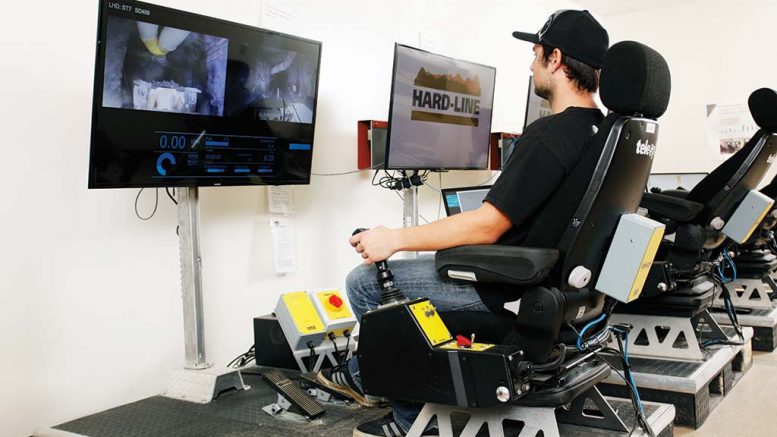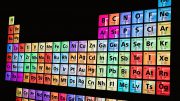Early traditional miners would have never believed that the industry tools of choice would one day shift from shovels and pickaxes to automation and artificial intelligence.
Mining companies are now faced with navigating how to operate — and seize the opportunities — in a market driven by constant disruption in the fourth Industrial Revolution. With a new era, comes new challenges. Companies that embrace and adapt to these challenges will emerge stronger and better positioned for long-term success.
Analytics and AI
A couple of years ago, Deloitte’s annual Tracking the trends report indicated the mining industry was beginning to realize the potential of digitization and the benefits of gathering data.
In 2019, we have now entered a period where companies have collected large pools of valuable data and are using it to sharpen planning and decision-making across the mining value chain to improve safety, increase productivity, reduce costs and enhance the employee experience.
For those companies at a more advanced stage of this technological shift, harnessing the power and potential of artificial intelligence (AI) and machine learning has become a priority. This is the beginning of a prominent industry trend, and one many companies will work to achieve in the years to come. We see a range of uses surfacing for AI, such as predictive safety, process optimization, optimized blasting and worker-machine coordination, to name just a few.

A Sandvik loader in glass labyrinth. Credit: Sandvik.
AI in this context means machines performing tasks that require human intelligence. We are entering an era where intelligent machines work with humans, rather than replacing them. To date, most organizations are working at a stage where machine intelligence requires human assistance and interpretation (i.e. robotic process automation).
However, leaders in this space are moving toward the next stage, where machine learning helps augment human decisions and drive cognitive insights. And while fully autonomous automation is still a few years away, this will be a reality for many greenfield operations in the future.
Digitizing supply chains
One area poised to better harness the power of digitization is the mining supply chain. Unlike industries such as manufacturing and automotive, which have embraced this technological shift, the mining sector still lags behind. Although many companies have started to digitize discrete pieces of equipment — such as trucks or trains — they have not extended these efforts across the entire supply chain, from pit to port.
Our research indicates most mining executives agree that the supply chain is a priority for digital transformation investments, yet supply chain improvements remain incremental, rather than improving the system as a whole. The opportunity lies in applying a manufacturing mindset to the supply chain, leading to lower levels of inventory, and more transparent supply and demand management.
We predict those who begin to see digitization as an essential component of every step in the supply chain will see the greatest improvements to their mining operations.
Managing new risks
With the mining industry changing faster than ever, there is big growth potential, but it comes at a cost, as there are risks associated with more disruption and volatility.
Today’s mining industry has a plethora of risks, characterized by mounting tariffs and sanctions, potential trade wars, cyber threats, uncertain tax and royalty regimes, heightened scrutiny from the investment community, environmental disasters and infrastructure breakdowns. If not properly addressed, these can result in mine shutdowns, public protests and corporate reputational damage.
It’s crucial for companies to continue to adapt their risk management systems to decrease threats the same way they adapt operational systems to increase efficiency. Analytics and AI gives organizations much more ability to monitor and assess these risks in a holistic way.
This approach should help mining companies address risk at an enterprise-wide level, rather than assessing isolated risks at the functional or mine site level, and allows companies to develop appropriate controls to proactively mitigate and manage the expanding array of risks they face.
Social outcomes
While digitization, analytics, and AI are all important trends for improving many business and operational functions of mining companies, miners must also focus on differentiating their strategies to generate long-term value, not only to attract investors, but also to remain successful in the communities in which they operate.
We see a trend in the industry, where companies need to relentlessly focus on revenue and costs, but at the same time drive what we are terming “value beyond compliance.”
For companies to de-risk their projects, it is key to create sustainable value within the communities in which they operate.
However, governments also need to create stable regulatory environments such that mining companies can remain profitable through the cycle, enabling them to invest into the community, and create that shared benefit.
To deliver on the social breadth of these programs, mining companies cannot work in isolation. Instead, they should look for opportunities to collaborate with other companies working in the region.
Enabling these shifts will require diversity of thought, and to that end we see a critical need for mining companies to drive diversity across the organization from the board level down. Creating diverse and inclusive workforces has shown to actively increase productivity within the operations, and promote innovation.
Other trends in Deloitte’s report include: new approaches to strategic planning, exploring the water-energy nexus, reimagining mining talent, decoding capital projects, operationalizing diversity and inclusion programs, and looking at how electric vehicles and battery minerals provoke the desire for provenance.

Andrew Swart
— Based in Toronto, Andrew Swart is Deloitte’s Canadian and Global Consulting Leader of the Mining & Metals. Visit www2.deloitte.com/ca for more information and to download for free the full 2019 Tracking the trends report.
RELATED PODCAST:
The Northern Miner Podcast – episode 131: Mining trends to watch in 2019 ft Deloitte’s Andrew Swart



Be the first to comment on "Commentary: Mining in the digital age"